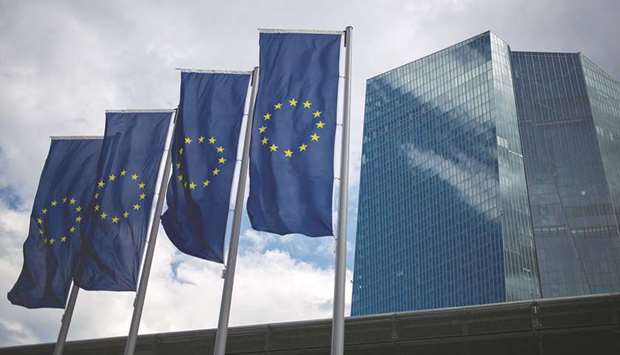The ECB is preparing to start dialling back its monetary stimulus after years of ultra-low interest rates and massive bond purchases, paving the ground for rate hikes further down the line.
After simulating scenarios ranging from a sudden monetary tightening to the kind of lending freeze that followed Lehman Brothers’ collapse, the ECB found that most of the 111 eurozone banks it tested are well prepared for interest rates shocks.
But it cautioned it needed “intense discussions” with 51 of them after finding they may be making themselves vulnerable via large bets on derivative instruments and overly aggressive models for calculating risk.
A hike in interest rates could mean the banks suddenly need more capital.
“What we need to do is have intense discussions and check with the banks if they’re aware of the risk and if they have enough capital if things go wrong,” Korbinian Ibel, a senior supervisor at the ECB, said.
Results of the test, which started in February, are incorporated into the ECB’s guidance on how much capital each lender on its watch should hold.
Ibel said the 51 banks may, in principle, see their capital demands rise by up to 25 basis points, although any decision would depend on the individual circumstances of each firm.
Similarly, the remaining 60 banks could see their guidance reduced by the same amount.
The ECB’s supervisory arm, which oversees the eurozone’s largest banks and carried out the exercise, is formally separated from its monetary policy function.
On aggregate, the ECB found that an increase of 200 basis points in interest rates would lead to a rise in net interest income of 4.1% in 2017 and of 10.5% by 2019 for the banks tested.
But when rates move, the net value of assets and liabilities of a bank also change.
The economic value of the banks’ equity would, however, decrease on aggregate by 2.7%, the ECB said.
Banks, particularly in richer countries such as Germany, have long complained that the ECB’s ultra-low interest rates have squeezed the margins they make on loans.
Indeed, the ECB found that, should interest rates stay at their end-2016 level and absent any credit growth, the aggregate net interest income would decrease by 7.5%.
Finally, the ECB warned that banks may be taking much of their customer deposits for granted based on recent years and failed to account for the rise of online banks and higher rates.
“One could assume that if interest rates rise, the share of stable deposits decreases, but this is not done by most of the banks,” Ibel said.
The stars of the EU are seen on banners flying outside the ECB headquarters in Frankfurt. The ECB is preparing to start dialling back its monetary stimulus after years of ultra-low interest rates and massive bond purchases, paving the ground for rate hikes further down the line.



